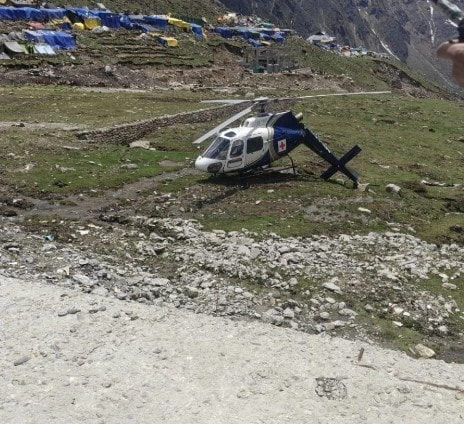In a dramatic turn of events, a helicopter ambulance found itself in a perilous situation during an emergency landing near Kedarnath, one of India’s revered pilgrimage sites. The incident unfolded amidst challenging weather conditions, which had raised alarms about the safety of air travel in the region. Helicopter ambulances play a crucial role in providing rapid medical assistance to those in remote areas, especially during emergencies when ground transport is limited or time is of the essence. On this occasion, the helicopter was en route to assist a critically ill patient when it encountered unexpected turbulence and adverse weather, prompting the pilot to make a split-second decision to land in a safe location.
As the helicopter descended, the crew and passengers onboard were acutely aware of the risks involved in such an emergency maneuver. The rugged terrain surrounding Kedarnath, marked by steep cliffs and unpredictable weather patterns, added to the complexity of the situation. Fortunately, the skilled pilot managed to navigate the helicopter to a relatively flat area, avoiding potential disaster. While the landing was rough, it was ultimately successful, ensuring the safety of everyone aboard. This incident highlights the crucial role of trained professionals in emergency medical services and the importance of their quick thinking and expertise in life-or-death situations.
The successful landing of the helicopter ambulance also underscores the challenges faced by medical teams operating in mountainous regions. The Kedarnath area, known for its spiritual significance, often attracts thousands of pilgrims, but the terrain can be treacherous, especially in adverse weather. The incident serves as a reminder of the need for reliable air ambulance services and the ongoing efforts to improve accessibility to medical care in remote locations. In response to this event, local authorities and health officials are likely to review their protocols and emergency response strategies to enhance safety and efficiency in future operations.
Overall, this narrow escape for the helicopter ambulance not only averted a potential tragedy but also reinforced the dedication of medical professionals who risk their lives to save others in challenging circumstances. The incident has sparked discussions about the importance of robust emergency services in pilgrimage areas and the need for continuous improvement in air travel safety, particularly in regions prone to sudden weather changes. As the community reflects on this event, it is clear that the commitment to providing timely medical assistance remains unwavering, despite the inherent risks involved.




